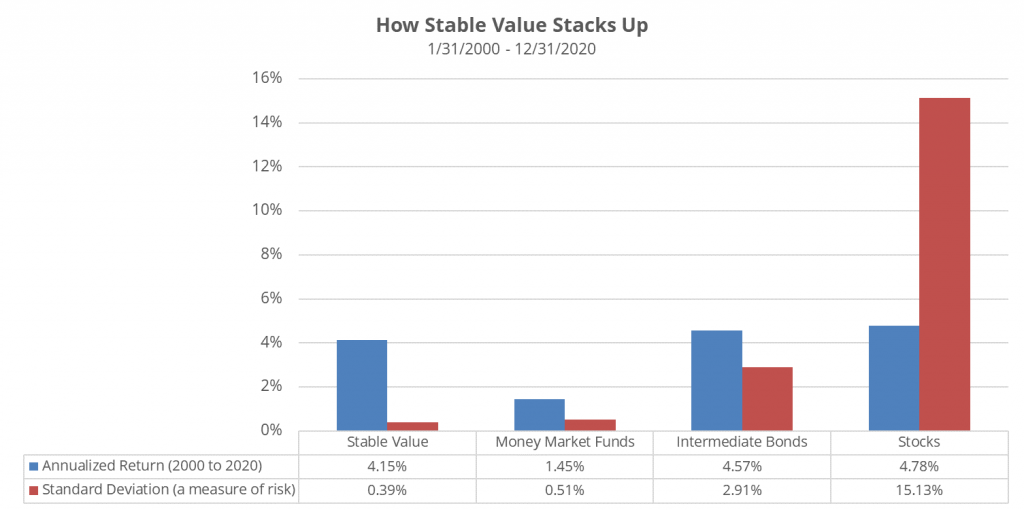Stable value generally refers to a relatively low-risk asset class that focuses on capital preservation and liquidity, while providing steady, positive returns to participants within certain types of savings plans. Stable value is available only in tax-qualified savings plans, such as defined contribution plans as well as in some tuition assistance plans. It is not available in Individual Retirement Accounts (IRAs) or retail accounts.
Stable value is one of the most common capital preservation options available in retirement savings plans. According to the SVIA 2020 Stable Value Investment & Policy Report, stable value investment options are available in over 185,000 retirement plans and tuition assistance plans, including 401(k), 457, 403(b), and 529 plans.
Stable value focuses on preserving retirement plan participants’ invested capital (or principal) while providing liquidity and steady, positive returns that have exceeded money market investments over time. Over a business cycle, most stable value investment options seek to provide returns similar to short- to intermediate-maturity bond strategies without the return volatility associated with those strategies.
While the structure of and investments within stable value may vary, the important similarity in all stable value is the use of investment contracts, which are issued by banks and insurance companies. These contracts help deliver steady returns and typically allow participants to transact at their invested balance plus any accrued interest. This characteristic is what is known to stable value practitioners as benefit responsiveness.
There are many terms that describe the value provided by stable value, such as capital preservation, fixed-interest, principal protection, GIC, or stable interest. Regardless of the term used or how the fund is named, stable value offers participants the same fundamental benefits: capital preservation, liquidity, and steady, positive returns that have exceeded those found in money market investments over time.


